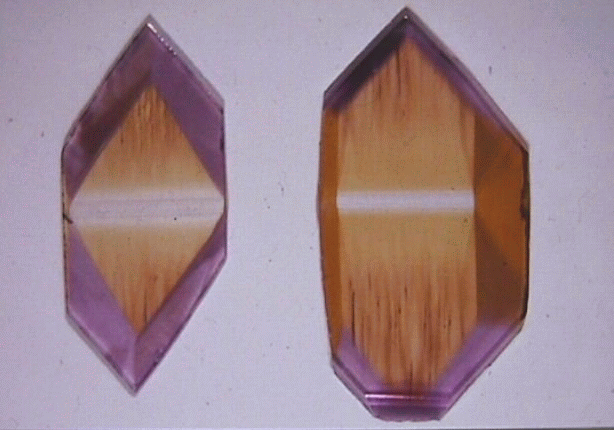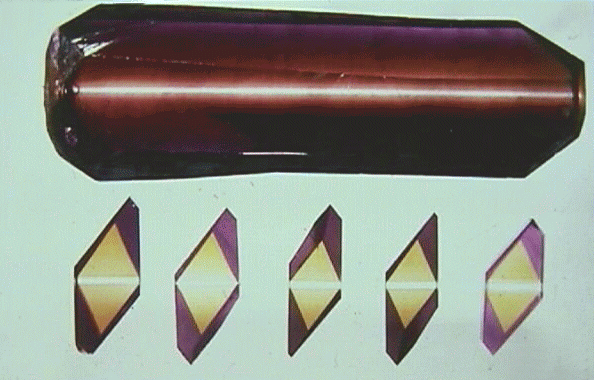Industrial growth, morphology, and some properties of bi-colored amethyst-citrine quartz (ametrine)
by
V.S.
Balitsky1, I.B. Machina2, A.A. Mar'in2, J.E.
Shigley3, G.R. Rossman4, T. Lu3
1Institute of Experimental Mineralogy, Russian Academy of Sciences,
Chernogolovka, Moscow Region, Russia
2Russian Research Institute for Material Synthesis, Alexandrov,
Vladimir Region, Russia
3Gemological Institute of America, Carlsbad, CA 92008
4California Institute of Technology, Pasadena, CA 91125
Journal of Crystal Growth 212, 255-260.
Abstract
In the middle of the 1990's the first industrial technology for producing synthetic bi-colored amethyst-citrine quartz (ametrine) was created. The technology is based on results of studies of the effect of different physical-chemical and growth factors on the formation, stability and the character of the distribution in crystals of amethyst and citrine color centers.
Figure 2
Distribution of amethyst and citrine colors in different growth sectors of synthetic ametrine crystals grown on seeds parallel to the basal pinacoid (0001).

Figure 4
Typical commercial ametrine crystals, grown on the seed parallel to the basal pinacoid, and cross sections from a similar crystal.

Page revised 15 Mar 2001.